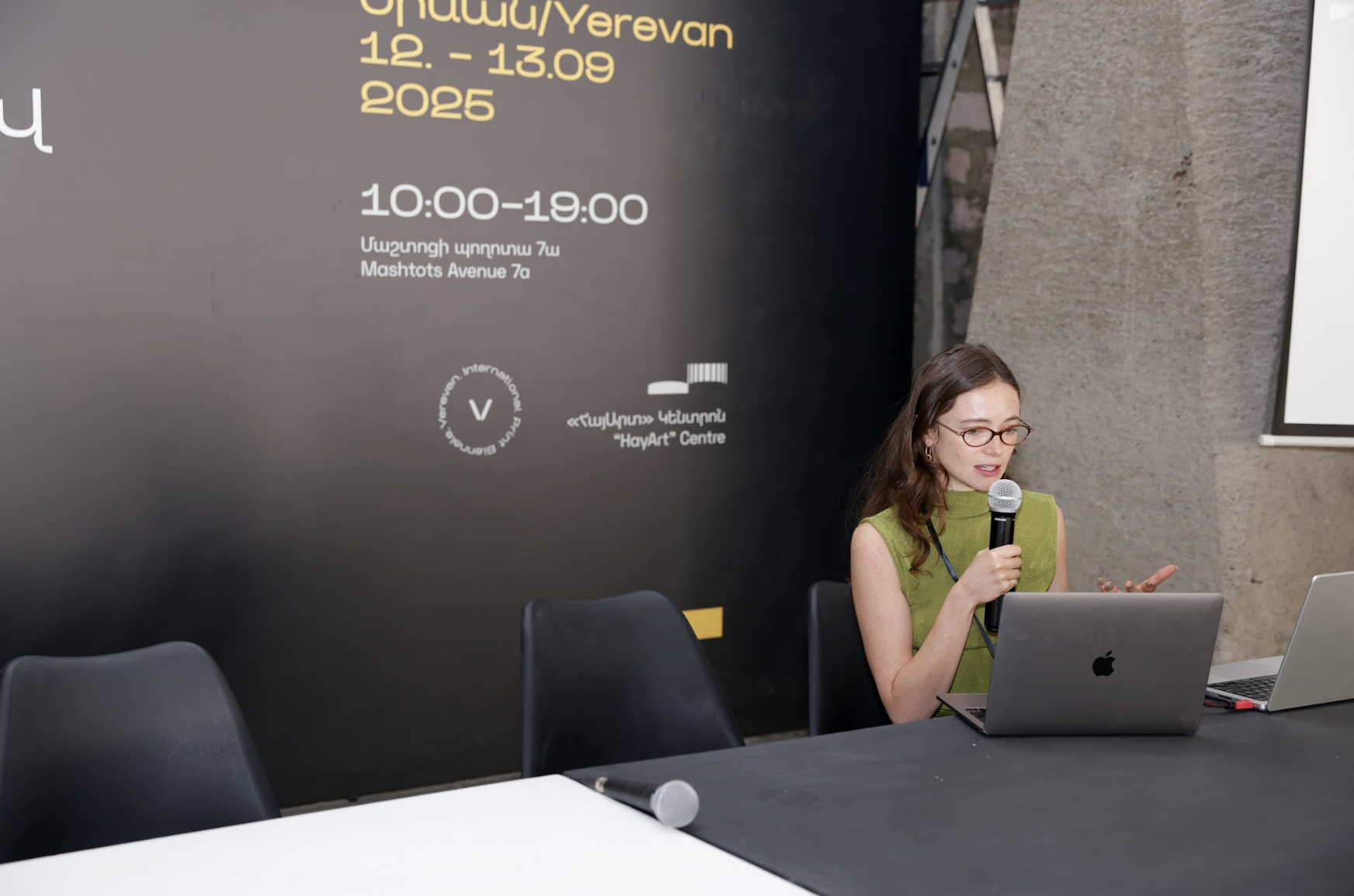
Symposium: Unpacking Generativity
“Artificial Optics: The ‘Myth of the Machine’ in AI Art”
“Artificial Optics: The ‘Myth of the Machine’ in AI Art”
OCT 2025
Presentation
TU Dresden
Dresden, Germany
Presentation
TU Dresden
Dresden, Germany

Symposium: Art, Artificial Intelligence, and Industry
“AI and the Phantasmagoric Dispositif in Contemporary Art”
“AI and the Phantasmagoric Dispositif in Contemporary Art”
SEPT 2025
Presentation
5th Annual Printmaking Biennale
Yerevan, Armenia
Presentation
5th Annual Printmaking Biennale
Yerevan, Armenia

Symposium: Is Generative AI Creative?
“Artificial Optics: AI Art as Phantasmagoric Spectacle”
Watch here...
“Artificial Optics: AI Art as Phantasmagoric Spectacle”
Watch here...
JULY 2025
Presentation
International Center for Theoretical Physics (ICTP)
Trieste, Italy
Presentation
International Center for Theoretical Physics (ICTP)
Trieste, Italy

Conference on ethics and aesthetics of artificial images (EA-AI 2025)
The EA-AI 2025 conference strives to unite theoretical and practical perspectives on AI-generated images, while bringing together ethical and aesthetic consideration.
Read more...
The EA-AI 2025 conference strives to unite theoretical and practical perspectives on AI-generated images, while bringing together ethical and aesthetic consideration.
Read more...
MAY 2025
Presentation
Università Iuav di Venezia
Venice, Italy
Presentation
Università Iuav di Venezia
Venice, Italy

Artificial Optics: Contemporary Art and the Sociotechnical Imaginary of AI
A new trend appears to be occurring with AI artists and exhibitions. Often directly financed by Silicon Valley companies through residencies, grants or partnerships, these artists and exhibitions are contributing to the construction of a new paradigm: what art and technology scholar Joanna Zylinska refers to as "platform art" in "AI Art: Machine Visions and Warped Dreams”. I broaden her 2020 study by looking at newer aesthetic patterns that are emerging in what I argue is phantasmagoric: immersive, hypnotic, seductive, terrifying, and sometimes even giving off the impression of the ethereal, sacred and divine. Artists can deconstruct dominant, misleading narratives around AI innovation and look to the technology’s potential for positive outcomes. Instead, these artworks gloss over the power structures behind the development and deployment of these technologies and ultimately add to the ominous shadow being cast over the technology’s hidden functionalities, biases, underlying histories and Silicon Valley ideologies.
A new trend appears to be occurring with AI artists and exhibitions. Often directly financed by Silicon Valley companies through residencies, grants or partnerships, these artists and exhibitions are contributing to the construction of a new paradigm: what art and technology scholar Joanna Zylinska refers to as "platform art" in "AI Art: Machine Visions and Warped Dreams”. I broaden her 2020 study by looking at newer aesthetic patterns that are emerging in what I argue is phantasmagoric: immersive, hypnotic, seductive, terrifying, and sometimes even giving off the impression of the ethereal, sacred and divine. Artists can deconstruct dominant, misleading narratives around AI innovation and look to the technology’s potential for positive outcomes. Instead, these artworks gloss over the power structures behind the development and deployment of these technologies and ultimately add to the ominous shadow being cast over the technology’s hidden functionalities, biases, underlying histories and Silicon Valley ideologies.
SEPT 2024
Presentation
L’Institut National d’Histoire de l’Art (INHA)
Paris, France
Presentation
L’Institut National d’Histoire de l’Art (INHA)
Paris, France
Photography and
Artificial Intelligence: New Perspectives for Photographic Creation
The status of photography is evolving and artificial intelligence is playing an increasingly important role in this creative transformation. During Fabien Ducrot's artistic residency, the Musée Départemental Albert-Kahn organized a roundtable discussion dedicated to the issues surrounding image-making and generative algorithms.
Read more...
Artificial Intelligence: New Perspectives for Photographic Creation
The status of photography is evolving and artificial intelligence is playing an increasingly important role in this creative transformation. During Fabien Ducrot's artistic residency, the Musée Départemental Albert-Kahn organized a roundtable discussion dedicated to the issues surrounding image-making and generative algorithms.
Read more...
DEC 2023
Roundtable Discussion with Fabien Ducrot & Marion Carré
Musée Albert-Kahn
Paris, France
Roundtable Discussion with Fabien Ducrot & Marion Carré
Musée Albert-Kahn
Paris, France